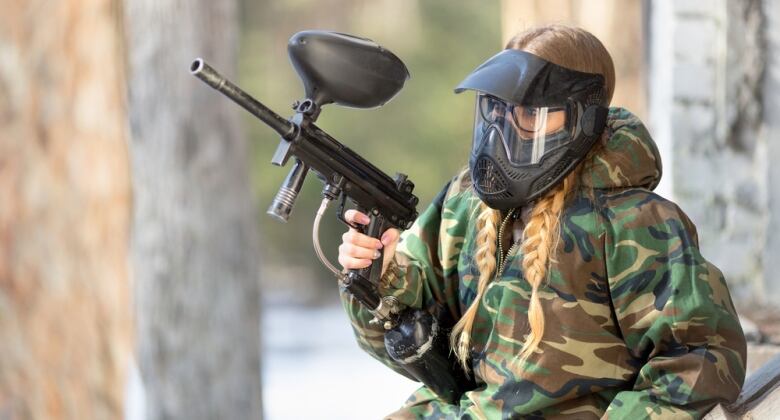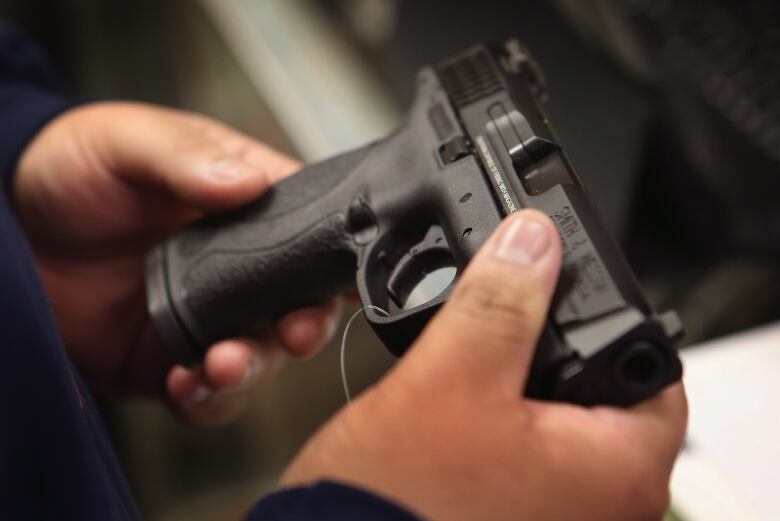Gun advocate says recent 'firearms' study misleading, could influence policy
Researchers behind study on youth fiream injuries defend methodology, say goal is to shed light on issue

Canadian gun advocates are concerned that a recent study that found nearly one child a day is injured by a firearm in Ontario misled the public and could be used down the road as ammunition forstricter gun laws.
In a studypublished two weeks ago inthe Canadian Medical Association Journal, researchersfound after poring over health records covering a five-year spanthat over 450 children and youth were injured following a firearms assault, and another 1,329 were unintentionally injured by a firearm in Ontario.
However, after several questions were raised online about how the catch-all term "firearm" was defined in the study, the authors released detailed breakdowns of the firearm types a week later.
The previously unreleased statistics showed thatin cases where the firearm type was known, over 78 per cent of injuries were from pellet, airsoft and paintball guns; not rifles, shotguns and handguns, which are by default regulated under the Canadian Firearms Act.

Canada's National Firearms Association believes the omission of this breakdown and the wording of the study created a lack of context that could be leveraged down the road by gun-control advocates, even though most of the injuries studied did not involve what is generally considered a "firearm," either legally or in the public eye.
"It sort of seems to us to be a scattergun approach to collating statistics, to justify a new legislative or regulatory offensive against Canadians who ownguns. This is a highly politically charged issue," said Blair Hagen, the association's executive vice-president.
"I think the authors of the study really need to explain what they were trying to achieve here, because a lot of the evidence that's given forth in this study seems to be done so towards trying to get some of legislative or regulatory effort going," he said.
Hagen also questioned the motivation behind the decision by the authors to define "children and youth" as those 24 years old or younger, when more than 80 per cent of the injuries were among those 15 years or older, many of whom could be adults.
He was also critical of the timing of the release of a position statement on firearms by the Canadian Paediatric Society that recommended notably tighter restrictions on semi-automatic and air guns on the same day.
Study aimed to fill 'knowledge gap'
The study's authors rejectthe notion that the manner in which the results were presented wasmisleading.
"What the study shows is that we have a lot of work to do and there's a big knowledge gap thereand I think that got lost in the messaging, and that's really important, and that there's no agenda here," said Dr.NatashaSaunders, a physician at the SickKids hospital in Toronto and one of the study's authors.
"The agenda is, 'let's reduce injuries in children and youth and how can we do that?'"
According to Saunders, the age and firearm classifications used for the study were consistent with international standards used by groups like the United Nations and the World Health Organization, and have well-established rationales.
She says the objective of the study was to shed light on the risks of being exposed to firearms or similar devices for both immigrant and non-immigrant children in the country.

"The messaging from our paper wasn't, 'OK, now we have to restrict all firearms and be tighter around this,'but I think we have to start looking at ways we can prevent these injuries," she said.
"One person may have a traditional thought or definition of a firearm being a handgun or a rifle but the actual definition used when it comes to statistical reporting onfirearms and the Criminal Code of Canada, those firearms include things like BB guns," said Saunders.
She said she had no involvement in the drafting of the position statement on firearms by the Canadian Paediatric Society, but confirmed the two groups co-ordinated their release on the same day.
Are BB guns 'firearms' in Canada?
In Canada, most pellet, airsoft and paintball guns are not legally considered 'firearms.'Only those guns capable of shooting a projectile faster than 500 feet per second and producingmuzzle energy greater than 5.7 joules are regulated under the Firearms Act. Higher-power air guns currently require the same licensing and storage practices as traditional firearms.
As a comparison, the Lee Enfield one of the most common hunting rifles in Canada produces muzzle velocities of over 2,500 feet per second can produce over 3,000 joules of energy.
Under the Criminal Code, the classification status of a pellet or air gun isfluid as it can change depending on the context in which it's used.
Any low-velocity air gun or replica not generallyclassified as a firearm under the Firearms Act can become a"firearm" in the legal sense under the Criminal Codeif it's used in the commission of a crime, is used carelessly or if the design is such that itis indiscernible from a real firearm.
- Kenora OPP issue warning about air guns and pellet guns
- Replica gun hazards prompt discussion over regulations
Statistics released by theWinnipeg Police Service show that in 2016, nearly 41 per cent of the firearms used in the commission of a crimewere air pistols.
Air gun risks underestimated
Dr. Saunders says the report suggests there's a need for more information regarding air guns and that prevention strategies should target the groups identified in the study.
"They're still being injured by [pelletguns], they're still being hospitalized, they're going to the emergency room and that's important information for us to understand, that maybe we're not understanding the safety of these enough and need to explore this further," she said.
Two of the recommendations made by the Canadian Paediatric Society were to classify air and pellet guns as firearms under the Firearms Act if they can penetrate eyes or skin, rather than using the 500 feet-per-second threshold. They also recommended that theybe regulated under the Consumer Product Safety Act for air guns with even lower projectile velocity.
Blair Hagen says firearmsrulesare already onerous enough and believes that as it stands, many of the existing laws already address the recommendations being made.
Attempts to reach the chair of the federal government's newly minted Firearms Advisory Committee for comment were unsuccessful.
Firearm injuries by type and intent, 2008 to 2012
| Unknown | Handgun | Rifle/shotgun | BB gun | Air gun | Legal Intervention | Total | |
| Unintentional | 478 | 33 | 75 | 619 | 113 | 11 | 1,329 |
| Assault | 256 | 83 | 29 | 70 | 10 | 0 | 448 |
Source: Table provided by the authors of the study in response to questions.












_(720p).jpg)


 OFFICIAL HD MUSIC VIDEO.jpg)
.jpg)



























































































